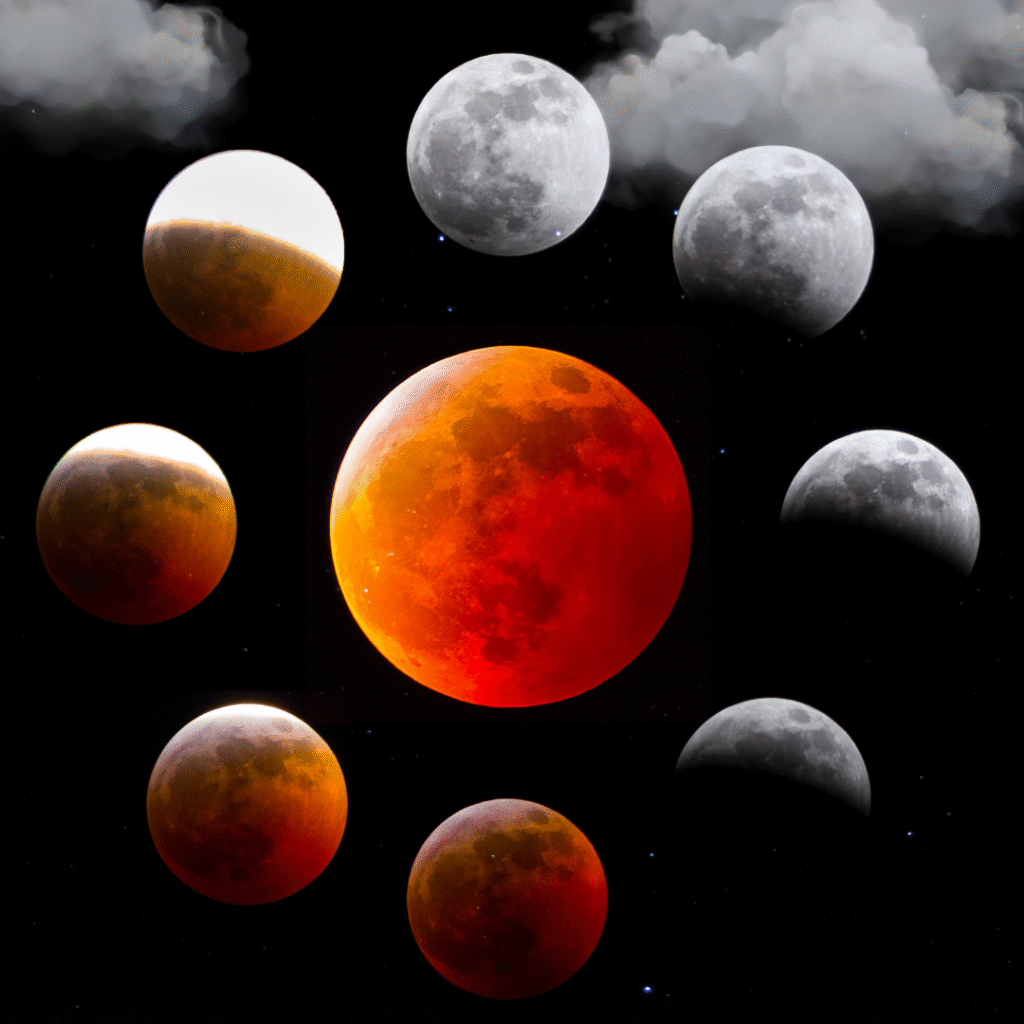
This children’s article, A blood moon will light up the sky next month!, has been written for native English speakers and learners of English as a second or foreign language. It can help children build vocabulary, learn about space events, and discover how to enjoy this exciting phenomenon safely. Written by Mark Pulley, a teacher and writer who creates fun and informative news articles for English learners.
What is a Blood Moon?
A Blood Moon is another name for a total lunar eclipse, when Earth moves directly between the Sun and the Moon. The Moon passes into Earth’s shadow, and instead of disappearing, it glows red or orange.
This happens because sunlight bends through Earth’s atmosphere, scattering blue light and letting only the reddish colours reach the Moon. That’s what makes it look like something from a Halloween movie.
When is it happening?
On Sunday, the 7th of September 2025, people around the world will have the chance to see this amazing event. It is the second lunar eclipse of 2025. The eclipse will last for several hours, with the darkest stage, called totality, lasting about 83 minutes.
As long as it’s not too cloudy, the entire eclipse will be visible from Asia, Australia, and eastern Africa. Large parts of Europe will also be able to see it, especially as the Moon rises in the evening. If you’re in the Mericas, I have bad news for you, because it’s unlikely you’ll be able to see it.
Best places and tips to watch
The best way to enjoy the eclipse is to find a spot with a wide, clear view of the sky, away from tall buildings or bright city lights. If you’re in the countryside or on a hill, you’ll have the best chance of seeing the eclipse.
Unlike solar eclipses, you don’t need special glasses! Lunar eclipses are safe to watch with your eyes. Binoculars or a telescope can make the red glow look even more dramatic, but they aren’t necessary.
Why it’s worth watching
This eclipse is special because it’s the longest total lunar eclipse of the 2020s, and it will be visible to millions of people across several continents. Lunar eclipses don’t happen often, so when one comes along, it’s a real treat for stargazers.

Article vocabulary list
- Lunar eclipse – When Earth blocks sunlight from reaching the Moon.
- Totality – The stage when the entire Moon is covered by Earth’s shadow.
- Atmosphere – The layer of air that surrounds Earth.
- Scatter – When light spreads out in different directions.
- Blood Moon – A nickname for a total lunar eclipse, because of the Moon’s red colour.
- Horizon – Where the land or sea seems to meet the sky.
- Binoculars – Two small telescopes joined together to make distant things look closer.
- Stargazers – People who enjoy watching the night sky.
Comprehension questions
Just click the plus (+) to see the answer
1. What makes the Moon turn red during a Blood Moon?
A) The Moon is heating up
B) Earth’s atmosphere scatters light, leaving red light
C) Clouds reflect onto the Moon
Answer: B) Earth’s atmosphere scatters light, leaving red light
2. When will the next Blood Moon take place?
A) 7 September 2025
B) 17 September 2025
C) 7 October 2025
Answer: A) 7 September 2025
3. Where can people see the full eclipse from start to finish?
A) Asia, Australia, eastern Africa
B) North America only
C) South America only
Answer: A) Asia, Australia, eastern Africa
4. How long will the stage of totality last?
A) 20 minutes
B) 83 minutes
C) 2 hours
Answer: B) 83 minutes
5. Do you need protective glasses to watch a lunar eclipse?
A) Yes, it’s dangerous without them
B) No, it’s safe to watch with your eyes
C) Only in Asia
Answer: B) No, it’s safe to watch with your eyes

Mark is a writer and EFL teacher from England with eight years’ experience. He’s passionate about travel, sport (especially football), animals, nature, and history, and enjoys helping children explore the world through language and learning.




